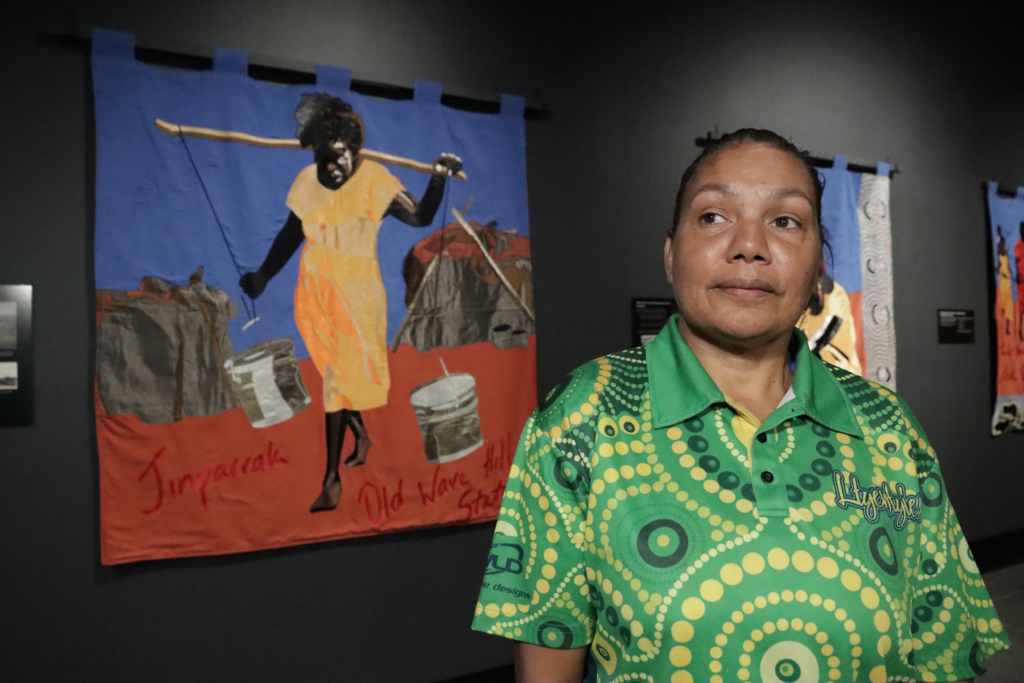Leah Leaman’s grandmother was among the 200 Aboriginal people who, led by Vincent Lingiari, walked off Wave Hill station in a strike against unfair working conditions in 1966.
Almost 60 years later, the Gurindji and Malngin artist opened a new exhibition in Darwin — about 800 kilometres north of where the historic action took place — which retells the story from the perspective of the Gurindji people.
Her grandmother is featured on one of the 10 textile banners created by about 35 Gurindji people in 2000, carrying water on her back.
“It tells the story of the hardship of our people, the conditions of our people,” Leah says.
“And we believe, especially the Gurindji, that the story should still be told and never forgotten.”
After an eight-year battle ,The Wave Hill Walk-Off resulted in the handing back of homelands to the Gurindji people, followed by the passing of the Aboriginal Land Rights (NT) Act in 1976.
Leah says the exhibition provides an opportunity for reflection for the broader community.
“[It] helps us to move forward as a people, for the betterment of our people, for everybody, as a society in Australia as a whole. And also, I’d like to think the world.”
History retold for new audiences
Joanna Barkman is the curator of the Charles Darwin University Art Gallery and also an artist involved in developing the banners.
She says the exhibition teaches people about the history of the action.
“There are…people that don’t know about the story of the Wave Hill Walk-Off. Many people do, but there are still many Australians that are not aware of this history,” Joanna says.
“People like Paul Kelly have written songs and Frank Hardy had written the book the Unlucky Australians and non-Indigenous people had told the story.
“But the banners were a great opportunity for the Gurindji themselves to tell their version of events.”
Penny Smith manages the Karungkarni Art and Culture Centre in Kalkarindji, the corporation for which is the custodian of the banners.
She says the exhibition was a positive experience for Kalkarindji and the surrounding community following a tough few months of recovering from major flooding.
“It’s actually a real bright highlight for us to be here and see them [the banners],” she says.
“What the floods did — it was like a big huge cleansing for a whole community, physically and emotionally.”
Penny says the textile works have been on a journey over the last two decades.
“They’ve always travelled in bags and plastic bins and back and forth from Darwin. And then they’ve been displayed up in a bush setting in Kalkarindji for events like the Freedom Day Festival. And also when Gough Whitlam passed away, we brought them out for that special occasion,” she says.
“But now, to see them in their full glory, it’s a wonderful experience.”
She says in the future, they hope to have them on display back on Gurindji country.
“We’re looking at developing our own keeping place, it won’t happen immediately. These are huge projects,” Penny says.
“But it’s been talked about for a long time. And we’ve just started to embark on that.”
The exhibition will run until July 15, 2023.
This content was originally published here.



